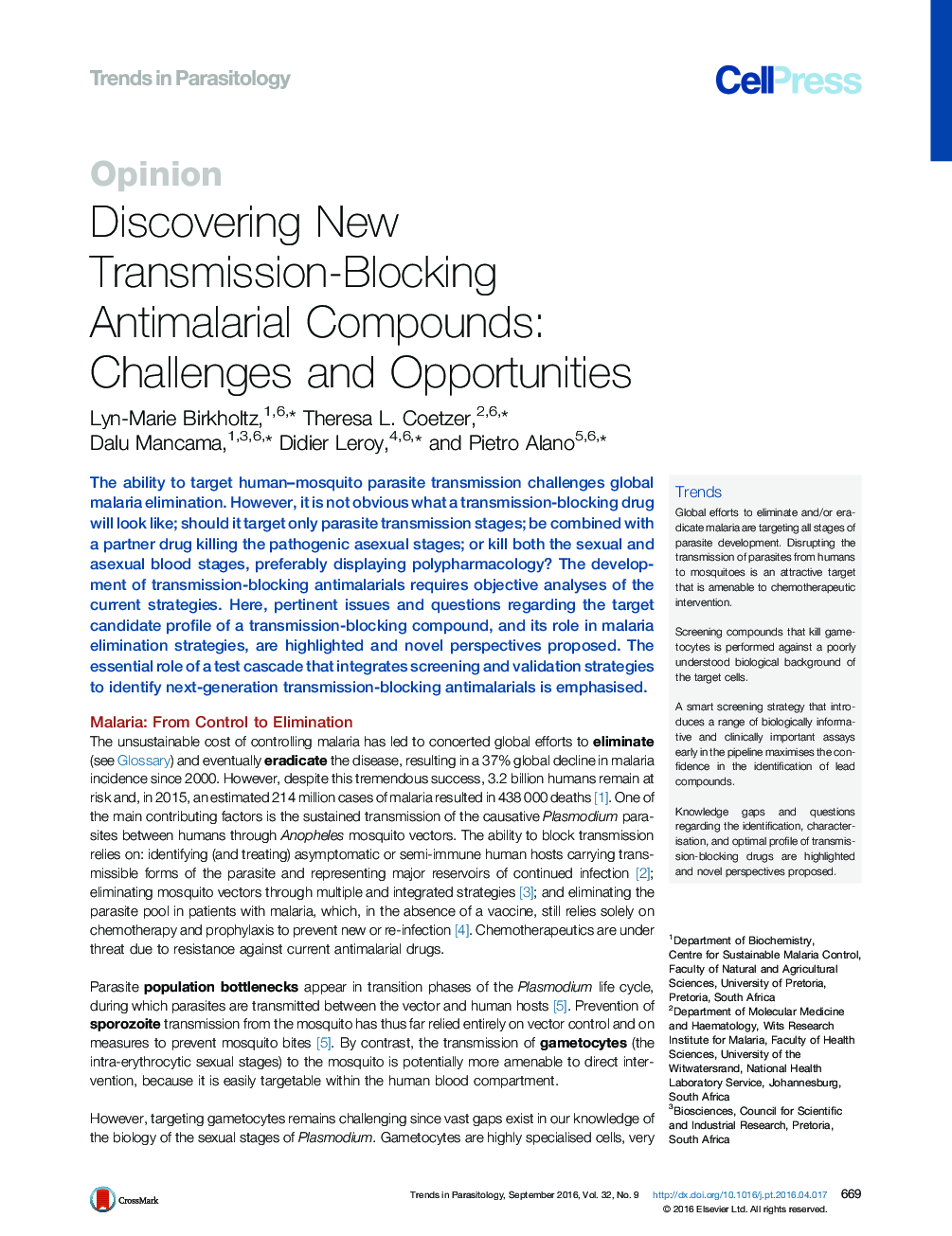| Article ID | Journal | Published Year | Pages | File Type |
|---|---|---|---|---|
| 3422865 | Trends in Parasitology | 2016 | 13 Pages |
The ability to target human–mosquito parasite transmission challenges global malaria elimination. However, it is not obvious what a transmission-blocking drug will look like; should it target only parasite transmission stages; be combined with a partner drug killing the pathogenic asexual stages; or kill both the sexual and asexual blood stages, preferably displaying polypharmacology? The development of transmission-blocking antimalarials requires objective analyses of the current strategies. Here, pertinent issues and questions regarding the target candidate profile of a transmission-blocking compound, and its role in malaria elimination strategies, are highlighted and novel perspectives proposed. The essential role of a test cascade that integrates screening and validation strategies to identify next-generation transmission-blocking antimalarials is emphasised.
TrendsGlobal efforts to eliminate and/or eradicate malaria are targeting all stages of parasite development. Disrupting the transmission of parasites from humans to mosquitoes is an attractive target that is amenable to chemotherapeutic intervention.Screening compounds that kill gametocytes is performed against a poorly understood biological background of the target cells.A smart screening strategy that introduces a range of biologically informative and clinically important assays early in the pipeline maximises the confidence in the identification of lead compounds.Knowledge gaps and questions regarding the identification, characterisation, and optimal profile of transmission-blocking drugs are highlighted and novel perspectives proposed.
